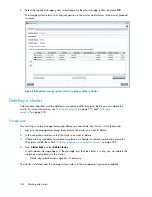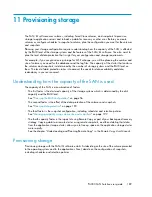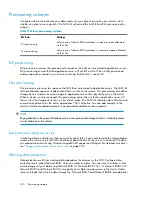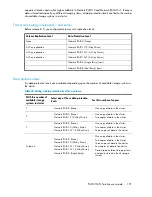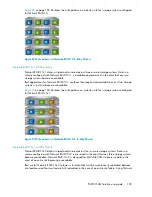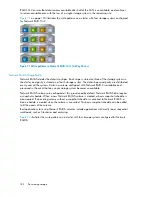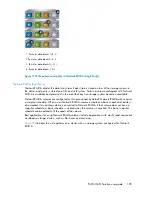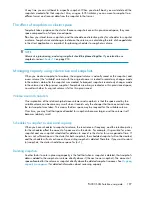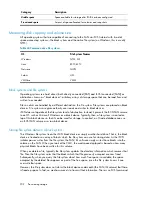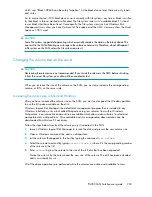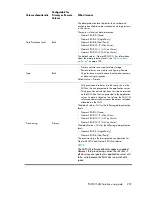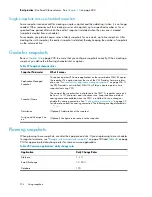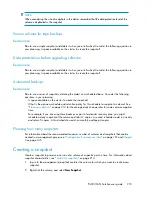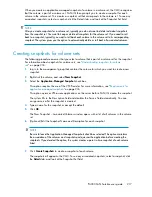
Description
Category
Space available for storage after RAID has been configured.
Usable space
Amount of space allocated for volumes and snapshots.
Provisioned space
Measuring disk capacity and volume size
All operating systems that are capable of connecting to the SAN via iSCSI interact with two disk
space accounting systems—the block system and the native file system (on Windows, this is usually
NTFS).
Table 44 Common native file systems
File System Names
OS
NTFS, FAT
Windows
EXT2, EXT3
Linux
NWFS
Netware
UFS
Solaris
VMFS
VMWare
Block systems and file systems
Operating systems see hard drives (both directly connected [DAS] and iSCSI connected [SAN]) as
abstractions known as “block devices”: arbitrary arrays of storage space that can be read from and
written to as needed.
Files on disks are handled by a different abstraction: the file system. File systems are placed on block
devices. File systems are given authority over reads and writes to block devices.
iSCSI does not operate at the file system level of abstraction. Instead, it presents the iSCSI SAN volume
to an OS such as Microsoft Windows as a block device. Typically, then, a file system is created on
top of this block device so that it can be used for storage. In contrast, an Oracle database can use
an iSCSI SAN volume as a raw block device.
Storing file system data on a block system
The Windows file system treats the iSCSI block device as simply another hard drive. That is, the block
device is treated as an array of blocks which the file system can use for storing data. As the iSCSI
initiator passes writes from the file system, the SAN/iQ software simply writes those blocks into the
volume on the SAN. When you look at the CMC, the used space displayed is based on how many
physical blocks have been written for this volume.
When you delete a file, typically the file system updates the directory information which removes that
file. Then the file system notes that the blocks which that file previously occupied are now freed.
Subsequently, when you query the file system about how much free space is available, the space
occupied by the deleted files appears as part of the free space, since the file system knows it can
overwrite that space.
However, the file system does not inform the block device underneath (the SAN/iQ volume) that there
is freed-up space. In fact, no mechanism exists to transmit that information. There is no SCSI command
Provisioning storage
202
Summary of Contents for StorageWorks P4000 Series
Page 24: ...24 ...
Page 38: ...Getting started 38 ...
Page 52: ...Working with storage systems 52 ...
Page 78: ...Storage Configuration Disk RAID and Disk Management 78 ...
Page 110: ...Managing the network 110 ...
Page 120: ...Administrative users and groups 120 ...
Page 232: ...Using snapshots 232 ...
Page 256: ...Working with scripting 256 ...
Page 268: ...Controlling server access to volumes 268 ...
Page 298: ...Registering advanced features 298 ...
Page 322: ...Replacing disks reference 322 ...
Page 324: ...Third party licenses 324 ...

